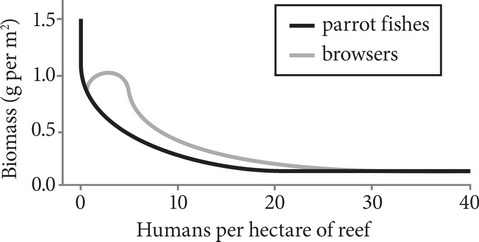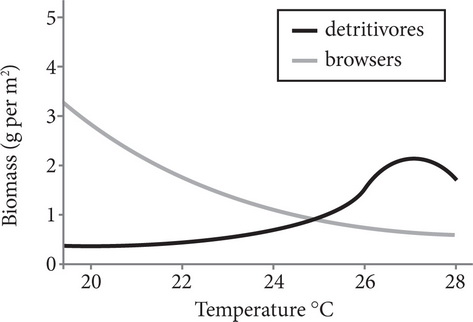PSAT 8/9 Reading Practice Test 5
Questions 1-9 refer to the following information.
This passage is adapted from Adel Heenan, Andrew S. Hoey, Gareth J. Williams, and Ivor D. Williams, "Understanding the conditions that foster coral reefs' caretaker fish," originally published in 2016 by The Conversation: https://theconversation.com/.
Coral reefs are among the most valuable natural
assets on Earth. They provide an estimated US$375
billion worth of goods and services every year, such as
Line supporting fisheries and protecting coasts. But reefs
05face many stresses and shocks, from local threats like
overfishing, habitat damage and pollution to the global
impacts of climate change. Many scientists are working
to identify management strategies that can effectively
buffer reefs against the array of threats that challenge
10them.
Herbivorous fish (species that eat plants) are
critical for healthy coral reefs because they help to
regulate the constant competition for space between
corals and seaweeds. Hard corals and other reef-
15building 15 organisms form hard skeletons out of calcium
carbonate, while fleshy organisms such as seaweeds
and algal turfs (thick mats of short algae) grow on
the surfaces of these hard structures. By feeding on
seaweeds and algal turfs, herbivorous fish prevent these
20organisms from smothering reefs.
Recent studies have stressed the importance for
coral reef conservation of protecting herbivorous fish,
which are heavily fished in many parts of the world.
But in a new study, we found that populations of
25herbivorous fish vary widely from site to site, and are
strongly influenced by factors including temperature
and island type. This means that strategies to protect
these important species may not work unless they take
local conditions into account, and no single strategy is
30likely to work everywhere.
Fishing has caused widespread reductions in
herbivorous fish populations on coral reefs around the
world. Because fishing has had such pervasive global
effects, it is hard to separate human impacts from the
35natural biophysical and environmental drivers of these
fish populations.
But we need to make this distinction if we want to
understand why herbivores might be naturally more
prevalent in some places than others, and to measure
40true human-related depletion effects accurately. More
specifically, in this study we wanted to know whether
it was reasonable to expect the same amount of these
fishes in areas where environmental conditions are
very different.
45All herbivorous fish are not equal. Depending
on what they eat, they perform different roles that
contribute to the functioning of coral reefs, much in
the same way that lawn mowers and hedge trimmers
perform different tasks in your garden. To understand
50how these fishes differ in their response to the
environment, we classified fishes in our study based
on their functional roles, defined by what they eat and
how they eat it.
For example, browsers eat fleshy seaweeds;
55detritivores comb algal turfs, feeding on a variety
of fine plant and animal matter; and scrapers and
excavators scrape hard surfaces on the reef, clearing
space for corals to colonize. Large excavators, such
as big parrotfish, are considered to be particularly
60important.
Since the groups of herbivores we studied play
different functional roles on reefs, healthy reefs are
likely to need diverse populations of grazing fishes.
Browsers and large parrotfish are most sensitive to
65human impacts, so our results suggest that we may
need new strategies to protect these species.
Our findings also show that a coral reef's
environmental setting strongly influences the number
and diversity of herbivorous caretaker species that it
70can support. For instance, browsers that feed directly
on macroalgae are naturally increased in cooler
locations, while detritivores that selectively remove
detritus from algal turfs (thus keeping the turfs clean)
have increased population sizes in warmer areas.
75Agencies that manage coral reefs are increasingly
turning to local-scale interventions to help make
these sensitive ecosystems more sustainable. Some
may adopt policies that focus on herbivores, such
as the marine reserve on the Hawaiian island of
80Maui where herbivores, but not other species, are
protected from fishing. Our results show that it is
important to treat herbivores as a diverse group with
different roles and vulnerabilities, and to think about
the environmental context as we design strategies to
85protect them.

Figure 1

Figure 2